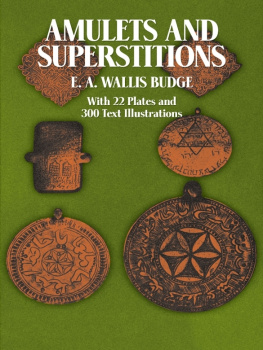Routledge Revivals
A History of Ethiopia: Volume II
This is the second volume of Sir E. A. Wallis Budges narrative account of Ethiopian history, and continues the chronicle of the Kings of Abyssinia where the first volume ended: the death of Lebna Dengel in 1540.
The list of kings ends with the Regent Ras Tafari, who still reigned at the time of first publication in 1928. Thereafter, the author devotes considerable attention to an overview of the cultural, social and political idiosyncrasies of the Ethiopian people: literature, spells and magic, architecture, ethnography, the alphabet, and a wide range of other engrossing topics. This material complements the narrative history, helping to situate the deeds of the kings and the fortunes of their people in a broader context.
First published in 1928
by Methuen & Co.
This edition first published in 2014 by Routledge
2 Park Square, Milton Park, Abingdon, Oxon, OX14 4RN
and by Routledge
711 Third Avenue, New York, NY 10017
Routledge is an imprint of the Taylor & Francis Group, an informa business
1928 Methuen & Co.
All rights reserved. No part of this book may be reprinted or reproduced or utilised in any form or by any electronic, mechanical, or other means, now known or hereafter invented, including photocopying and recording, or in any information storage or retrieval system, without permission in writing from the publishers.
Publishers Note
The publisher has gone to great lengths to ensure the quality of this reprint but points out that some imperfections in the original copies may be apparent.
Disclaimer
The publisher has made every effort to trace copyright holders and welcomes correspondence from those they have been unable to contact.
A Library of Congress record exists under LC control number: 28028537
ISBN 13: 978-1-138-79164-0 (hbk)
ISBN 13: 978-1-315-76266-1 (ebk)
H.H. TAFAR MAKONNEN, HEIR AND REGENT OF ETHIOPIA
REPRODUCED FROM THE TRAVELS IN EGYPT AND ADEN, WRITTEN IN AMHARIC AND PUBLISHED BY HIS HIGHNESS AT DER DW IN THE YEAR OF MERCY, 1915
A HISTORY OF ETHIOPIA
NUBIA & ABYSSINIA
(ACCORDING TO THE HIEROGLYPHIC INSCRIPTIONS OF EGYPT AND NUBIA, AND THE ETHIOPIAN CHRONICLES)
BY
SIR E. A. WALLIS BUDGE, KT.
M.A. and Litt.D. Cambridge, M.A. and D.Litt. Oxford, Lit.D. Durham, F.S.A., Sometime Keeper of the Egyptian and Assyrian Antiquities in the British Museum, Star of Ethiopia 3rd Class
IN TWO VOLUMES
WITH FORTY-NINE PLATES, THIRTY-ONE ILLUSTRATIONS IN THE TEXT, AND A MAP
A HISTORY OF ETHIOPIA
Galwdws, or Claudius, was the son of Lebna Dengel (who began to reign A.M. 7000 = A.D. 1508, and died A.M. 7033 = A.D. 1540) by his wife Sabla Wangl. During the last years of the reign of Lebna Dengel the Arabs had made themselves masters of practically all Abyssinia, and in every place where they had triumphed they laid waste and destroyed and burnt and turned the country into a desert. They carried off from the churches the gold and silver vessels, the precious Indian stuffs, which were sown with gems, and everything of value, and then they set fire to them and razed the walls to the ground. They slew every adult Christian they found, and carried off the youths and maidens and sold them as slaves. The remnant of the Christian population were terrified at the ruin which was overtaking their country, and with the view of staying the attacks of the Arabs, nine men out of ten renounced the Christian religion and accepted Islm. A mighty famine came on the country, and pious folk believed that God had strengthened the fires of hell and was permitting them to devour, not only trees and plants, but the earth itself. Lebna Dengel and his family were driven from their house and city, and for some years they wandered about the country homeless, and suffered hunger and thirst and hardships of every kind. Under these privations he was smitten with grievous sickness, and died, and Claudius, one of his younger sons, became king in his stead.
When Claudius became king of Ethiopia he was only eighteen years of age, but it is clear from the statements made by the chronicler that he was well above the average in spirit and courage, and that his good sense and knowledge and wise understanding were recognized by all his fellows. Though his fathers army was broken and scattered, and his country a ruin, Claudius, firmly believing in the power of God and His will to help him, resolved to make an attempt to fight the Arabs, who were led by the redoubtable Amad, commonly known as Gr,
i.e. the Left-handed, the Amr of Harrar, who during the past twelve years had defeated the Abyssinians in every battle. His father, who was believed to possess the gift of prophecy, had told him that he would break the enemy, and taking with him the rod of iron which God had sent to him from the heavenly Jerusalem, he went from village to village, and from town to town, and preached his mission and collected men for the army he needed. Men rallied round him and feared nothing, for they believed that with the power of God behind them, one of them could put to flight a thousand, and two of them ten thousand. Pinkhi, the Nubian king, some twenty-two centuries earlier, used almost the same words, for he told his troops that with the help of Amen one man could lead captive a thousand

(Pinkhi Stele, 1. 13). In the first year of his reign Claudius engaged two bodies of Arabs, but gained no certain victory. He then crossed two rivers and entered Tegry (Tigray)

, the original home of the kings who founded the kingdom of Aksm, and then went on to the central province of Shaw (Shoa)

, where he passed the winter in collecting recruits. In the spring Claudius, with 60 or 70 horsemen and a small number of foot-soldiers, attacked the army of Nar ad-Dn, son of the Imam Ahmad, who commanded a force of 1000 horsemen and 10,000 foot-soldiers. Claudius was utterly defeated, but managed to escape unharmed, and he returned to the town he had passed the winter in and built himself a winter palace and a summer palace. A little later a considerable number of deserters from the forces of the Arabs joined themselves to the soldiers of Claudius, and they gathered together on the summit of one of the high mountains of ft





















 (Pinkhi Stele, 1. 13). In the first year of his reign Claudius engaged two bodies of Arabs, but gained no certain victory. He then crossed two rivers and entered Tegry (Tigray)
(Pinkhi Stele, 1. 13). In the first year of his reign Claudius engaged two bodies of Arabs, but gained no certain victory. He then crossed two rivers and entered Tegry (Tigray)  , the original home of the kings who founded the kingdom of Aksm, and then went on to the central province of Shaw (Shoa)
, the original home of the kings who founded the kingdom of Aksm, and then went on to the central province of Shaw (Shoa)  , where he passed the winter in collecting recruits. In the spring Claudius, with 60 or 70 horsemen and a small number of foot-soldiers, attacked the army of Nar ad-Dn, son of the Imam Ahmad, who commanded a force of 1000 horsemen and 10,000 foot-soldiers. Claudius was utterly defeated, but managed to escape unharmed, and he returned to the town he had passed the winter in and built himself a winter palace and a summer palace. A little later a considerable number of deserters from the forces of the Arabs joined themselves to the soldiers of Claudius, and they gathered together on the summit of one of the high mountains of ft
, where he passed the winter in collecting recruits. In the spring Claudius, with 60 or 70 horsemen and a small number of foot-soldiers, attacked the army of Nar ad-Dn, son of the Imam Ahmad, who commanded a force of 1000 horsemen and 10,000 foot-soldiers. Claudius was utterly defeated, but managed to escape unharmed, and he returned to the town he had passed the winter in and built himself a winter palace and a summer palace. A little later a considerable number of deserters from the forces of the Arabs joined themselves to the soldiers of Claudius, and they gathered together on the summit of one of the high mountains of ft 